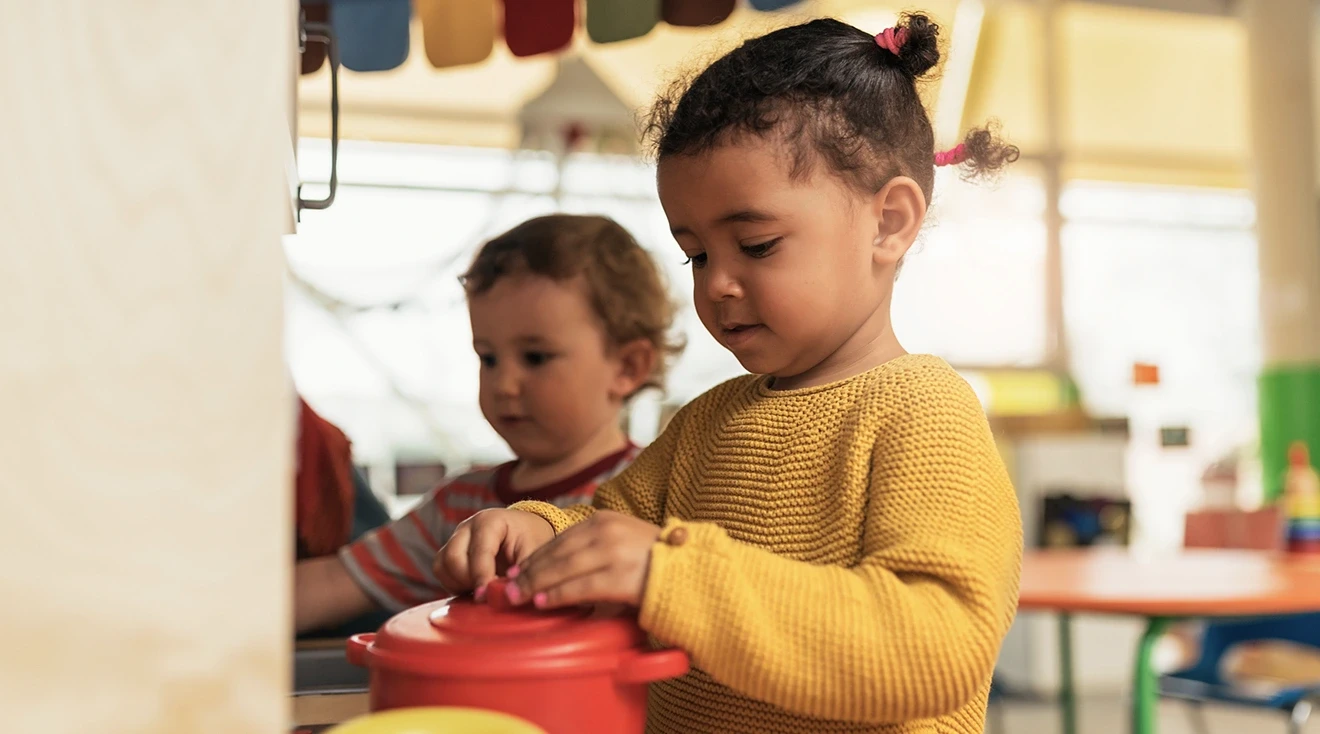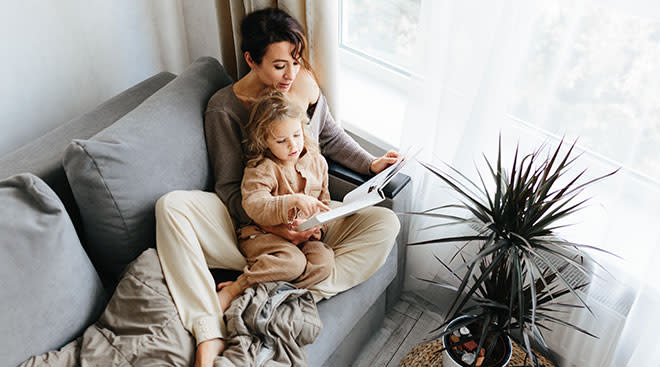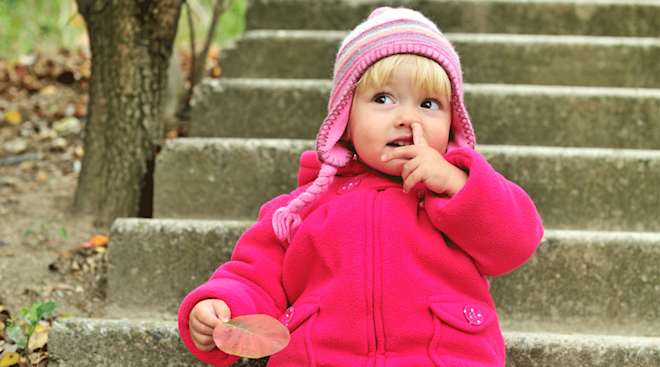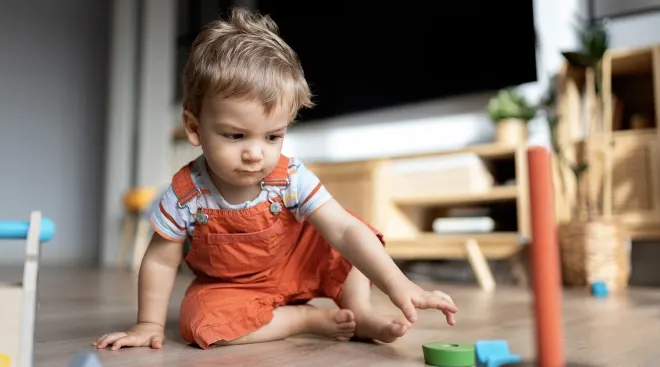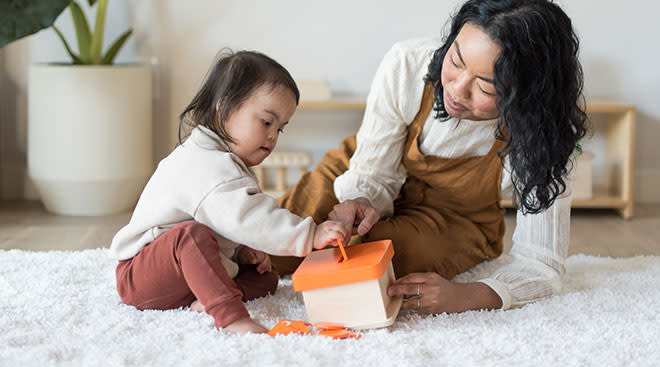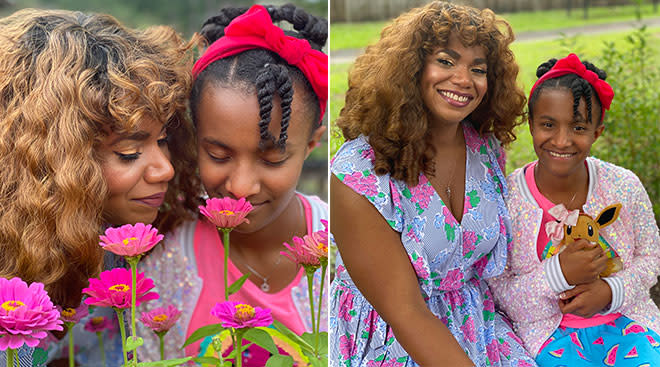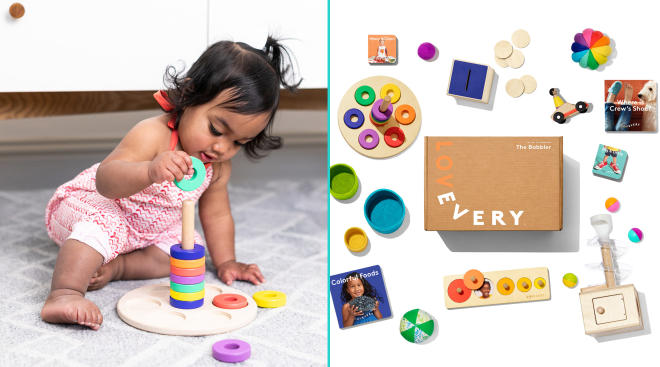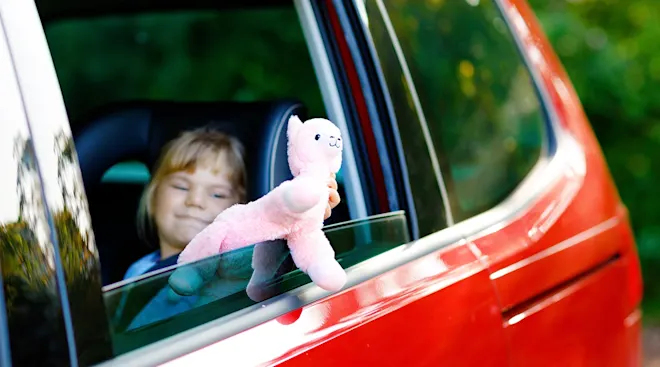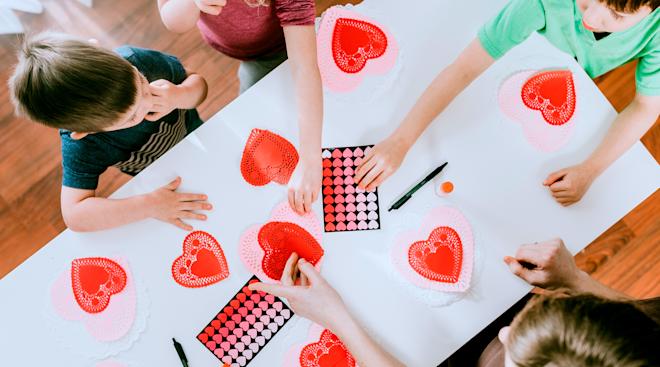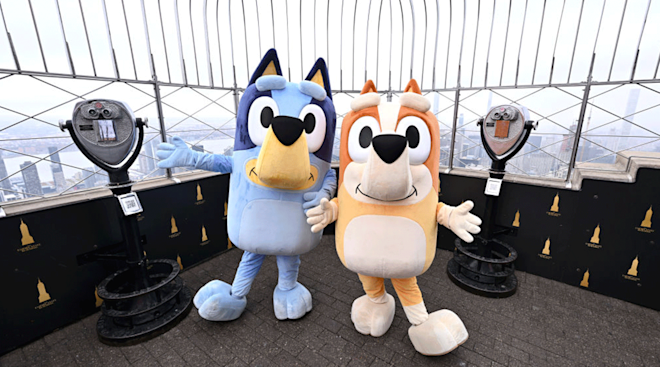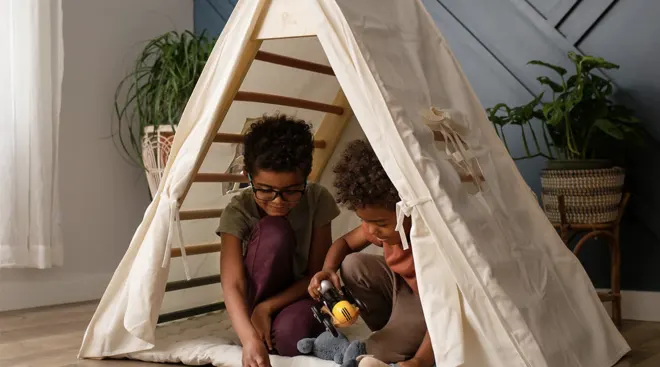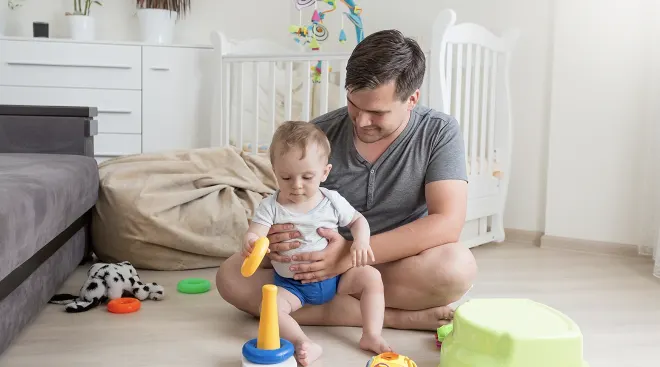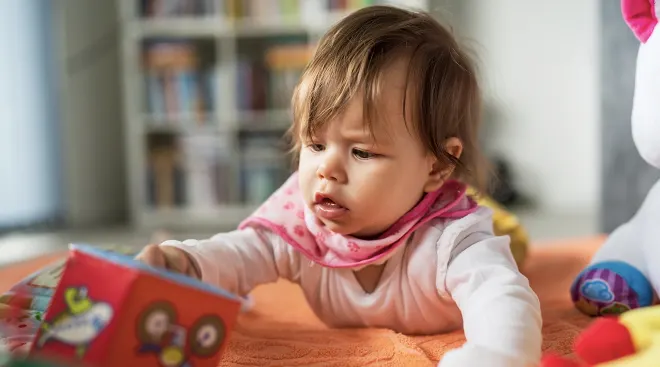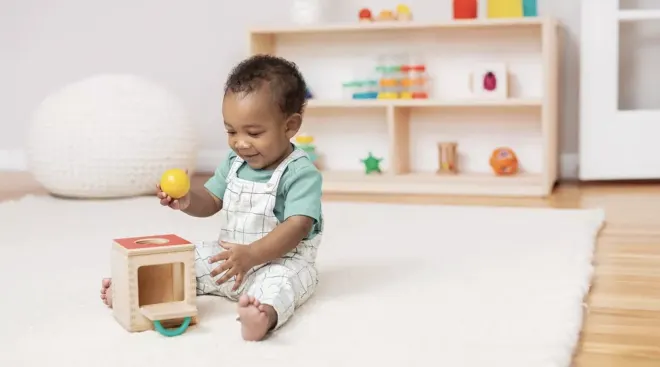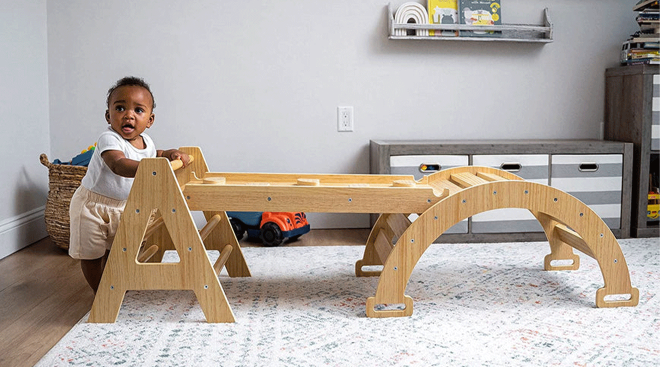The Different Stages of Play and How They Help Kids Learn
Picture this: You’re at the playground and spot a group of preschoolers running around playing tag, a couple toddlers in the sandbox seemingly ignoring each other and a baby hanging out in their stroller just taking it all in. Believe it or not, all of these children are engaging in play—in their own age-appropriate ways. There are many different types of play that emerge at various stages—and they’re all critical to your child’s learning and well-being. Here, experts break down everything you need to know about play, including what it is, how the different stages of play came to be and why each is important for childhood development.
Play is often seen as something fun and perhaps even frivolous, says Bibi Boynton, LCSW, a child therapist and parent coach who specializes in children’s mental health, but it serves a crucial role in kids’ social, emotional, cognitive and physical development. Play is “the language of young children,” adds Maria Shaheen, PhD, senior director of early education at Primrose Schools. “It’s a way [for kids] to examine their own theories about how things work and even provides a catalyst for friendships in-the-making.” What’s more, play helps little ones explore, imagine, create, collaborate, communicate, build vocabulary, problem solve and enhance motor skills, says Lee Scott, an early childhood education consultant and chair of the Goddard School’s Educational Advisory Board.
We know about the power of play thanks to important research, including that of Mildred Parten. Parten was a sociologist in the early 1900s who studied how children progressed through play in their first few years of life. These observations led her to determine the six stages of play:
Stage 1: Unoccupied play
Parten’s first stage is unoccupied play, which is when baby moves and observes without a specific goal. “They’re exploring items and their environment,” Hovington notes. “They haven’t developed the structure of play yet.” Examples of this include watching anything that happens to be of interest in the moment, looking at things like shadows moving on a wall, squeezing materials and knocking over toys. Unoccupied play is typically seen in babies, with the exception of older children who have neurological challenges, says Shaheen.
Stage 2: Solitary play
This is Parten’s second stage of play. As the name indicates, solitary play means playing alone, but in such a way that the child is completely focused on what they’re doing and not concerned with their peers’ activities. It’s important to give kids breathing room during this stage, Scott says, and to resist the temptation to correct mistakes—especially if they’re happily entertaining themselves. "Parents don’t need to hover. Let the children build a tower that falls or color outside the lines—as they learn to practice and try again, they’ll develop critical-thinking skills, initiative and creativity,” she says. Solitary play typically starts during the baby years and continues into toddlerhood, Hovington adds.
Stage 3: Onlooker play
Onlooker play refers to a child observing other kids playing, possibly talking to them or asking questions, but not actively engaging in the game. “Though they don’t join in the play, they’re gathering important information about how play works,” Shaheen says. Imagine two preschoolers kicking a soccer ball around a park while a young toddler pushes their doll stroller nearby, watching them carefully. “You can support them by asking questions about what they’re watching and encouraging them to join in,” Scott adds. Onlooker play usually starts in the toddler years and may still be observed in elementary school children.
Stage 4: Parallel play
Parallel play is Parten’s fourth stage of play. It usually starts with young toddlers (around age 2 to 3), and refers to children who play side-by-side in the same space. They may converse or take turns picking up the same toy, but their interaction is limited. An example of this is two children playing with blocks next to each other, but focused on building two separate structures, Shaheen says. "As children begin to practice give-and-take—first with toys and then, as language blossoms, with thoughts and ideas—parallel play gives way to cooperative play, [the final stage], where kids are fully engaging with each other,” Boynton explains. “As in many areas of development, this transition isn’t a straight line, there can be some back-and-forth between parallel play and cooperative play as children grow and learn.”
Stage 5: Associative play
Associative play is Parten’s fifth stage of play, and another intermediary phase that helps kids prepare for more interactive types of interaction down the road. The term “associative” means that children are playing the same game or working with the same materials. It’s when kids “purposefully focus on engaging with other children during play and engaging in storylines with peers,” Shaheen says. Parents can help encourage kids to actually play together by “scaffolding,” or gently guiding their interactions. “Adults provide children with a platform in order to reach richer, more in-depth levels of development in their play,” Boynton explains. “So maybe two children are playing side-by-side, and an adult suggests, either with words or in a visual way, how they might connect their play with one another.” For younger kids, this might be as simple as demonstrating how their block building could connect with a friend’s structure by adding a bridge. For preschool children who are having fun coming up with a backstory for their role play, it could mean calling your kid’s attention to a friend’s suggestion for how the narrative could evolve and helping them incorporate each other’s ideas into the game. It’s important, however, to keep any adult involvement from becoming overbearing, as this could stifle kids’ creativity and independence (more on this below).
Stage 6: Cooperative play
All the previous stages of play help prepare kids for cooperative play, the last of Parten’s six stages. “It’s when they’re truly playing and planning together,” Scott says. Taking turns while playing a board game, putting on a puppet show, playing house and assembling a puzzle together are just a few examples of what cooperative play can look like. True cooperative play gives kids the opportunity to “learn the building blocks of social interactions with peers, which leads to successful friendships,” Boynton says. It also provides a safe place to make mistakes and practice resolving the inevitable skirmishes that erupt when a bunch of young kids are in the same space (“I had that doll first!”). “As children develop from toddlers into preschoolers, with the help of supportive adults, they can learn to express their needs with one another, and play provides a space for the early development of empathy,” Boynton says. Cooperative play doesn’t typically happen until the preschool period, at the earliest, when kids are about 4, since it requires a certain level of maturity.
It’s important to remember that, while Parten established these six stages of play, they aren’t set in stone. Kids may “move in and out of these stages at different times” and “engage in several types of play throughout early childhood,” Shaheen says. “For example, 5-year-olds may engage in solitary, parallel and cooperative play, depending on their play environment,” says John Maypole, MD, an associate professor of pediatrics at Boston University School of Medicine. “The stages aren’t neat and clean lines.” Children, especially toddlers, may vacillate between different stages of play as they become more comfortable engaging with their peers in new ways.
While Mildren Parten’s research on childhood development was groundbreaking, she hasn’t been the only researcher to study the role of play in early childhood. Jean Piaget was a psychologist known for his work studying intelligence in young children. His work, however, focused more on kids’ cognitive development through play (rather than social development). “He believed that children make their way through four stages of development, with each stage being characterized by distinct ways of understanding the world,” says Cindy Hovington, PhD, founder of Curious Neuron, a science-backed parenting consultancy. His stages of developmental play are defined as:
- Sensorimotor or functional stage: Both Shaheen and Hovington say this phase of play lasts through the infant and toddler stages, and involves a child using their senses to explore their surroundings. Examples of sensorimotor play include opening and closing their hands, sucking their thumb or putting a toy in their mouth.
- Preoperational or constructive stage: Lasting from 2 to 7 years, this is when play becomes more imaginative. This stage could involve some pretend play, role play and imitative play, as kids begin to use their imaginations and act like adults, Hovington says.
- Concrete operational stage: This stage involves more logical and concrete thinking during play, as well as more rule-following, (think: board games). It occurs when kids have learned to play more cooperatively, and have better self-regulation and memory skills, Shaheen says. Kids may reach this stage between 7 and 11 years of age, adds Hovington.
- Formal operational stage: This is the stage in which kids begin to think abstractly, plan more strategy and utilize more complex problem-solving skills during play, Hovington says. It’s usually seen in kids aged 11 and up.
Beyond Parten’s and Piaget’s stages of play, there are many other different types of play important to child development. Read on to learn more about some distinct types of play, and what you can do to help guide your child’s development.
Imitative play
Children often start mimicking their parents in babyhood through games like peek-a-boo, which Scott says can help strengthen the parent-child bond. But around age 2, they’ll also start to imitate their peers. They might not be directly engaging with the other kids during imitative play, but they’re showing a new awareness of each other. You can encourage this type of play by incorporating rhyming games, songs and dance parties into your little one’s playtime, and creating opportunities for your child to play with slightly older kids.
Dramatic play
“This is the classic type of play in the toddler to preschool years, when children might act as their favorite pretend or fantastical characters,” Maypole says. You can help inspire your child’s imagination by encouraging them to dress up, pretend to be a plane or an animal, set up an imaginary store or stage a show for the family. “It’s a wonderful way that children express their complex emotional inner landscape, revealing their inner concerns, fears, joys and confusions,” Boynton says. “It’s also a fabulous backdrop for practicing the elements of cooperative play, infused with the creative power of their burgeoning imaginations.”
Competitive play
Children don’t really grasp the concept of winning and losing until age 4 or 5, which is when competitive play can kick in. In supportive environments, a little competition can be healthy, Scott says, since it helps kids understand that losing isn’t the end of the world. To introduce your child to the notion of winning, losing and taking turns, start with a simple board game like Candy Land. If even that seems too upsetting, try a game where players are on the same team working toward a common goal, like Richard Scarry’s Busytown Eye Found It or the Sneaky, Snacky Squirrel Game.
Physical play
The American Academy of Pediatrics (AAP) recommends that children 6 and up get at least one hour of physical activity each day. Not only does it help little ones burn off energy, but studies have also shown that physically active kids are more likely to become active adults. It also helps kids improve balance, coordination and cardiovascular health, Shaheen says. Playing tag, climbing playground gyms, kicking around balls and playing hopscotch are all great ways for kids to get active and strengthen their muscles. Rough-and-tumble play (also called horseplay or big-body play) is a specific kind of physical play that can involve wrestling or pretend fighting. Rough play can also help children release energy, satisfy their need for close physical contact and encourage them to take appropriate risks. Just be sure to supervise.
Constructive play
STEM learning (as in science, technology, engineering and math) is a common term for childhood development, and constructive play is the precursor to it. "This is when children create things with toys or objects in their environment,” Scott says. “It helps them develop science, engineering, creativity, math and problem-solving skills, and it encourages our early inventors.” (Think: skyscrapers that kids build from blocks or cars they design out of cardboard boxes.) This type of play also encompasses sensory play, when kids experiment with materials like rice, clay or sand. You don’t need to bother buying lots of fancy materials to encourage constructive play—kids are content to play with whatever is lying around the house, like empty paper towel rolls, clean plastic containers and empty egg cartons.
Outdoor play
While this one may be an obvious part of childhood, both Shaheen and Hovington emphasize its importance—especially in the modern day age of screens. “Much research has been done in the past several decades noting the many benefits of outdoor play on learning, attention, self-regulation, and environmental awareness,” Shaheen notes. According to the AAP, outdoor play can help kids’ physical health, promote more engaged learning, improve critical thinking skills, boost mental health and help emotional regulation.
Whatever type of play your child prefers—or stage of play they’re currently enjoying—remember that there’s no “right” way to do it, Shaheen says. “Each child develops at their own pace, and these are not hard-and-fast steps all children will go through in the same way or at the same time.”
Please note: The Bump and the materials and information it contains are not intended to, and do not constitute, medical or other health advice or diagnosis and should not be used as such. You should always consult with a qualified physician or health professional about your specific circumstances.
Plus, more from The Bump:
Bibi Boynton, LCSW, is a child therapist and parent coach who specializes in children's mental health. She’s a graduate of Hunter College School of Social Work and earned her bachelor’s degree in psychology from Brown University.
Cindy Hovington, PhD, is the founder of Curious Neuron, a science-backed parenting consultancy that aims to make the science around childhood development more accessible and digestible for parents. She’s also the host of the Curious Neuron podcast. She obtained her master’s degree from Queen’s University and doctorate in neuroscience from McGill University, both located in Canada.
John Maypole, MD, is a clinical associate professor of pediatrics at Boston University School of Medicine. He has also served as a primary care doctor with Boston Medical Center for over 20 years. Maypole received his medical degree from Yale University School of Medicine and completed his residency with the Boston Combined Residency Program in Pediatrics.
Lee Scott, is an early childhood education consultant with over 25 years of experience and chair of the Goddard School's Educational Advisory Board. She earned her bachelor’s degree in education and her master’s degree in communications both from the University of Maine.
Maria Shaheen, Ph.D., is the senior director of early education at Primrose Schools and has over a decade of experience working as a teacher. She has a doctoral degree in curriculum and a master’s degree in elementary education, both from Kent State University, located in Ohio.
MedStar Health, Why Active Kids are Healthier Kids Especially While Stuck at Home, March 2020
Healthy Children (American Academy of Pediatrics), Making Physical Activity a Way of Life: AAP Policy Explained, August 2020
Healthy Children (American Academy of Pediatrics), Playing Outside: Why It’s Important for Kids, April 2023
Learn how we ensure the accuracy of our content through our editorial and medical review process.
Navigate forward to interact with the calendar and select a date. Press the question mark key to get the keyboard shortcuts for changing dates.
































